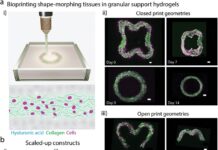Scientists from the National Institutes of Health (NIH) and their collaborators have identified a gene responsible for certain inherited retinal diseases (IRDs), a group of disorders that damage the retina, the eye’s light-sensitive layer, and threaten vision. Although over 2 million people worldwide are affected by IRDs, each individual condition is rare, making it difficult to recruit enough participants for research and clinical trials. The findings were published today in *JAMA Ophthalmology*.
In a small study involving six unrelated individuals, researchers linked the gene UBAP1L to various forms of retinal dystrophies, including maculopathy (affecting central vision), cone dystrophy (impacting color vision), and cone-rod dystrophy (affecting both color and night vision). The participants developed symptoms of retinal dystrophy in early adulthood, which progressed to severe vision loss by late adulthood.
While the patients exhibited symptoms similar to other IRDs, the underlying cause was unclear. Now, with the identification of the UBAP1L gene, researchers can explore how this genetic mutation leads to disease and potentially develop targeted treatments.
“Identifying the gene responsible allows us to study how the defect causes the disease, with the hope of eventually finding a treatment,” said Bin Guan, Ph.D., chief of the Ophthalmic Genomics Laboratory at the NIH’s National Eye Institute (NEI) and senior author of the study.
As reported by news-medical.net, the discovery of UBAP1L adds to the list of more than 280 genes known to be involved in this complex disease. Dr. Laryssa A. Huryn, co-senior author and an ophthalmologist at NEI, emphasized the importance of genetic testing for retinal dystrophy patients, highlighting how collaboration between clinics and laboratories helps advance the understanding of these conditions.
Genetic analysis of the six patients revealed four variants in the UBAP1L gene, which encodes a protein heavily expressed in retinal cells, such as retinal pigment epithelium and photoreceptors. Although more research is needed to fully understand the gene’s function, scientists determined that the identified variants likely result in a non-functional protein.
Future research will take into account that the genetic variants identified appear to be specific to certain geographic regions. Five of the six families in this study were from South or Southeast Asia, or Polynesia, areas that have been underrepresented in genetic studies.
The research was co-led by teams from Moorfields Eye Hospital and University College London, with contributions from the University of Liverpool and Baylor College of Medicine. The study was funded by NEI’s Intramural Research Program and supported by NEI grants.
























